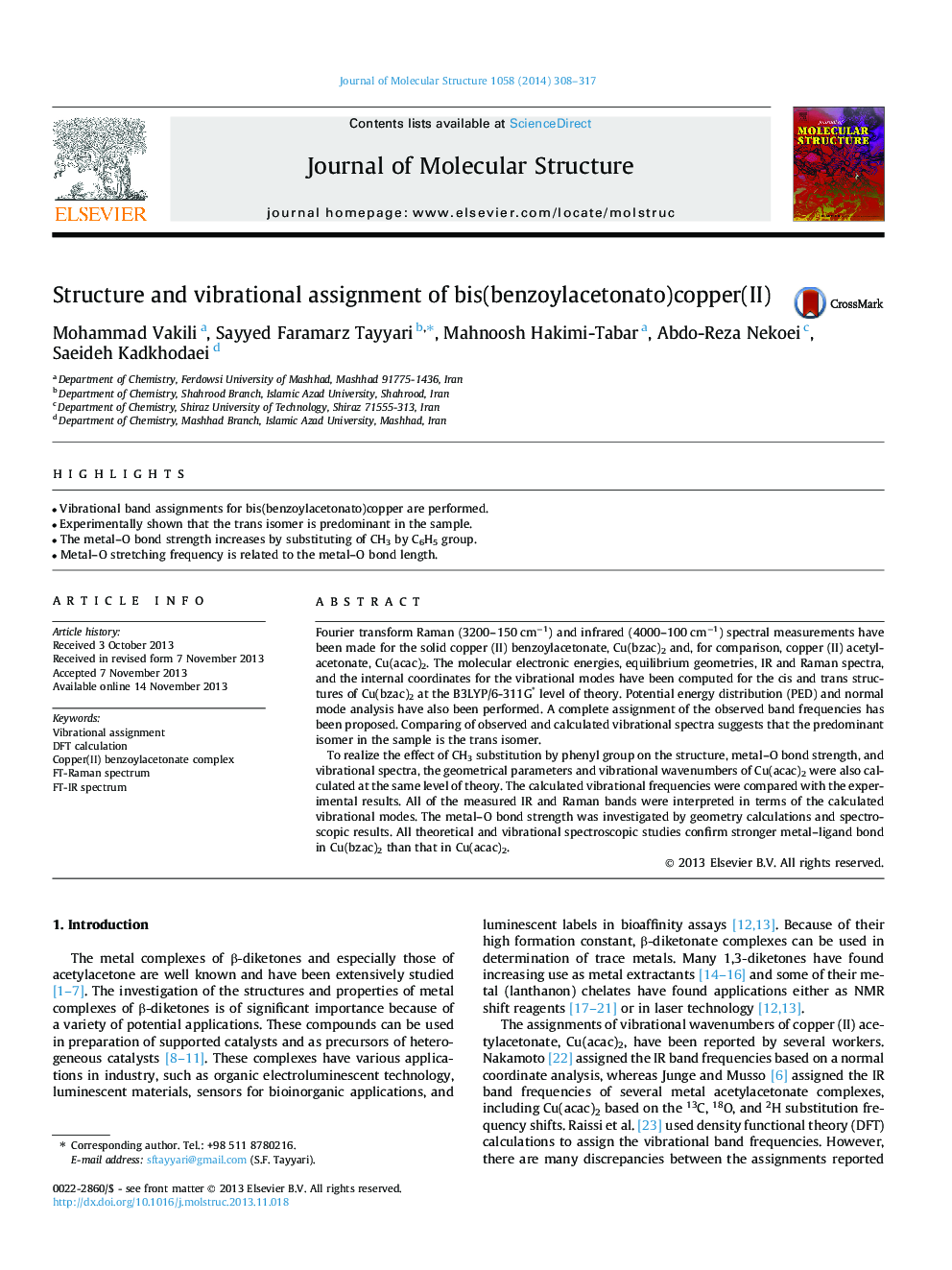| Article ID | Journal | Published Year | Pages | File Type |
|---|---|---|---|---|
| 1405802 | Journal of Molecular Structure | 2014 | 10 Pages |
•Vibrational band assignments for bis(benzoylacetonato)copper are performed.•Experimentally shown that the trans isomer is predominant in the sample.•The metal–O bond strength increases by substituting of CH3 by C6H5 group.•Metal–O stretching frequency is related to the metal–O bond length.
Fourier transform Raman (3200–150 cm−1) and infrared (4000–100 cm−1) spectral measurements have been made for the solid copper (II) benzoylacetonate, Cu(bzac)2 and, for comparison, copper (II) acetylacetonate, Cu(acac)2. The molecular electronic energies, equilibrium geometries, IR and Raman spectra, and the internal coordinates for the vibrational modes have been computed for the cis and trans structures of Cu(bzac)2 at the B3LYP/6-311G* level of theory. Potential energy distribution (PED) and normal mode analysis have also been performed. A complete assignment of the observed band frequencies has been proposed. Comparing of observed and calculated vibrational spectra suggests that the predominant isomer in the sample is the trans isomer.To realize the effect of CH3 substitution by phenyl group on the structure, metal–O bond strength, and vibrational spectra, the geometrical parameters and vibrational wavenumbers of Cu(acac)2 were also calculated at the same level of theory. The calculated vibrational frequencies were compared with the experimental results. All of the measured IR and Raman bands were interpreted in terms of the calculated vibrational modes. The metal–O bond strength was investigated by geometry calculations and spectroscopic results. All theoretical and vibrational spectroscopic studies confirm stronger metal–ligand bond in Cu(bzac)2 than that in Cu(acac)2.
